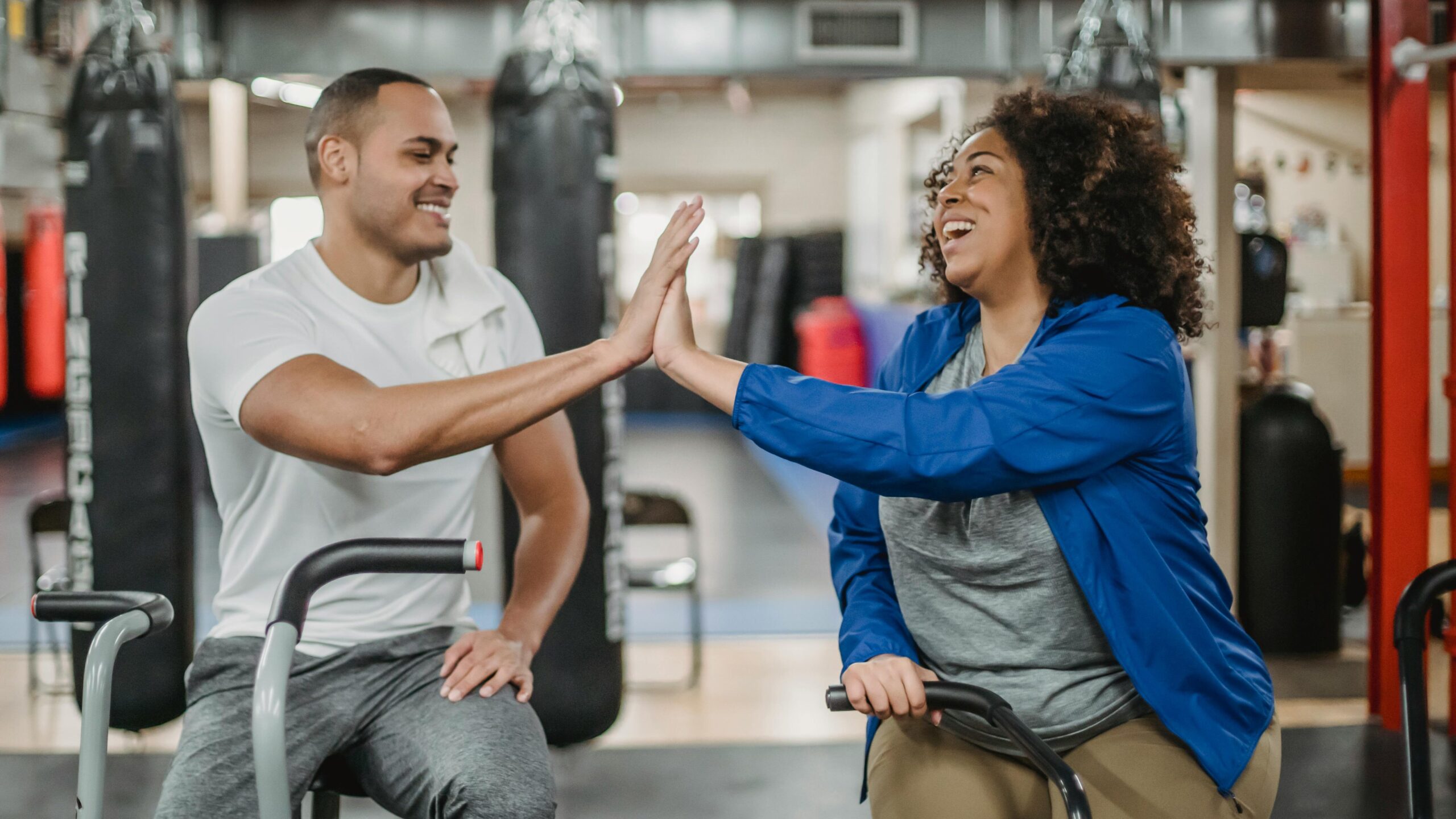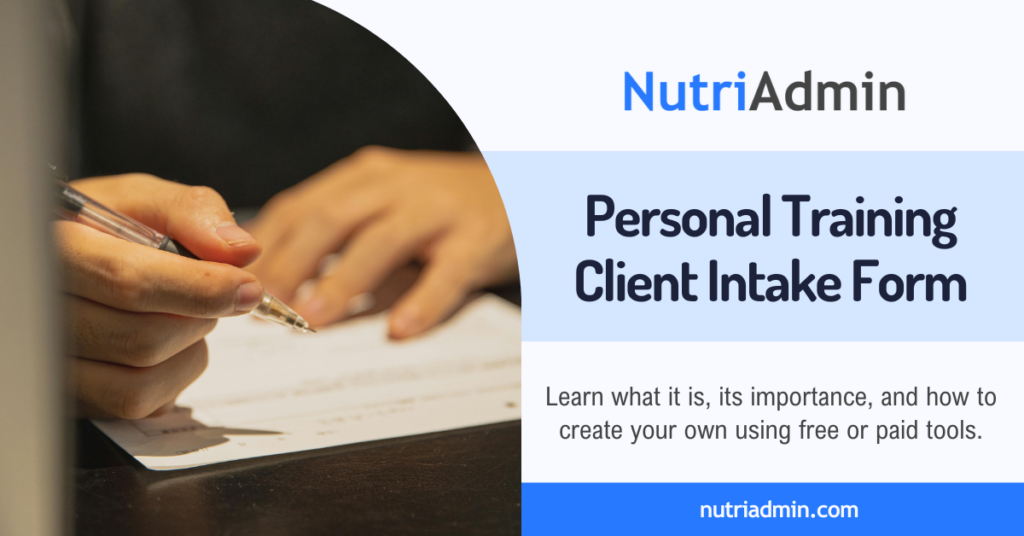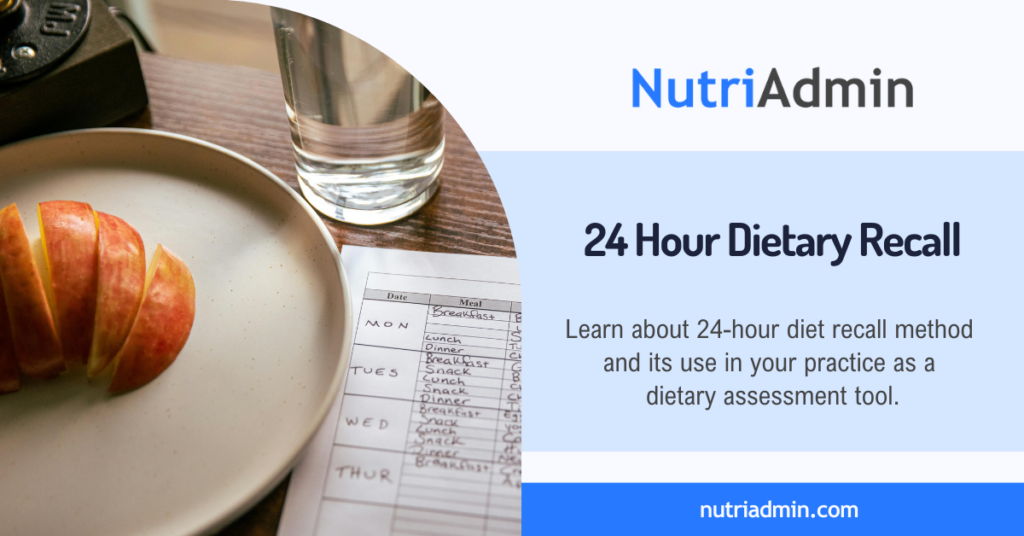Have you ever considered how fitness professionals determine if a client is ready to begin a new exercise program? Are you a fitness professional looking to ensure safe and effective fitness training for your clients? Curious about how the PAR-Q+ Form assists other personal trainers in customizing workouts?
Learn more about the development and purpose of the PAR-Q+ form. Additionally, discover how it can support your fitness practice and help you decide on safe and effective exercise programs for your clients. Stay until the end to see how you can use it in NutriAdmin.
What is the PAR-Q + Form?
The Physical Activity Readiness Questionnaire for everyone, or PAR-Q+ form, is a self–screening tool to assess if an individual is fit to engage in physical activities. It effectively assesses risks and promotes physical activity for people of all ages. This includes those with chronic medical conditions, by reducing barriers to participation.

While physical activity is generally safe for most people, some may need professional advice before increasing physical activity. The PARQ + form helps identify potential risks or limitations that may affect an individual’s ability to engage safely in exercise.
History and Background
Researchers developed the PAR-Q+ in 2011 as an update to the original Physical Activity Readiness Questionnaire (PAR-Q), which originated in the 1970s. Researchers used the original PAR-Q as one of the first tools to screen for potential exercise risks and contraindications.
However, over time it became clear that the PAR-Q had some limitations in identifying certain risk factors and medical conditions. There was a need for a more comprehensive screening tool aligned with current research and best practices.
The updated PAR-Q+ was a collaborative effort between fitness and medical professionals, with input from the Canadian Society for Exercise Physiology (CSEP). The goal was a more inclusive screening process to improve exercise safety.
For more details about the history of PAR-Q+ and its authors, you can read further on their history page here.
PAR-Q vs PAR-Q+
While researchers designed the original PAR-Q for ages 15-69, the PAR-Q+ has no age restrictions and aims to be usable for all demographic groups, including older adults.
The PAR-Q+ form is also more user-friendly, with downloadable PDF forms and interactive versions available on the official website, eparmedx.com.
What is in the PAR-Q + Form?
The PAR-Q+ form contains different sets of questions, mostly requiring yes or no answers. These questions help determine if an individual is ready for physical activity. They also assist in determining if they should seek additional advice from their physician or an exercise professional before becoming more active.
Main questions in PAR-Q + form
The following are 7 main questions in the PARQ+ Form:
- Has your doctor ever said that you have a heart condition OR high blood pressure?
- Do you feel pain in your chest at rest, during your daily activities of living, OR when you do physical activity?
- Do you lose your balance because of dizziness OR have you lost consciousness in the last 12 months?
- Have you ever been diagnosed with another chronic medical condition (other than heart disease or high blood pressure)?
- Are you currently taking prescribed medications for a chronic medical condition?
- Do you currently have (or have had within the past 12 months) a bone, joint, or soft tissue (muscle, ligament, or tendon) problem that could be made worse by becoming physically active?
- Has your doctor ever said that you should only do medically supervised physical activity?
If the individual answered no to all questions in the PAR-Q+ form, they are ready to participate in physical activity. However, if they answered yes to one or more of the questions mentioned above, they are recommended to answer follow-up questions.
If the individual still has a yes answer to any of the follow-up questions, they should complete the ePARmed-X+. Alternatively, they can visit a fitness or health professional for additional advice or to guide them with ePARmed-X+.
This way, they can receive expert guidance to evaluate their ability to participate in physical activities or understand the limitations of the exercises they can do.
Below is the downloadable PAR-Q+ from the eparmedx.com website:
Associated Form: ePARmed-X+
The ePARmed-X + is an interactive tool complementing the PAR-Q+ form. It assists individuals in assessing their readiness for increased physical activity or a fitness appraisal. Additionally, it is user-friendly and offers personalized recommendations based on an individual’s medical history and current health status. If you’ve had a positive PAR-Q+ form response or a healthcare provider referral, this tool helps assess your readiness for physical activity. Consequently, this promotes informed decisions and safe participation tailored to your needs.
Who can use the PAR-Q+ form?
Anyone preparing to start a new exercise program or significantly increase their physical activity levels should complete the PAR-Q+. All personal trainers, fitness instructors, coaches, and others providing exercise programming should have clients complete the PAR-Q+ before starting.
Use of PAR-Q+ for Personal Trainers and Coaches
The results in the PARQ+ form guide how you develop safe, effective exercise programs. For clients with no identified risk factors, you can likely proceed with moderate exercise. But for those with limiting conditions, modifications like lower intensity, specific precautions, and medical supervision may be necessary.
Personal trainers and coaches can also use the PAR-Q+ proactively before working with any new client as part of their onboarding process. Reviewing it together helps establish dialogue about goals, abilities, and any considerations needing addressing.
Use the PARQ+ form before starting any new specialized training program, such as:
- Sports conditioning programs for athletes
- Exercise programs during and after pregnancy
- Weight loss or body composition training
- Functional training for older adults
- Working with clients who have disabilities or chronic conditions
The PAR-Q+ outcomes enable you to consider particular restrictions and implement adjustments from the beginning, decreasing the risk of injury and enhancing program effectiveness.
When to Use the PAR-Q+ Form?
Whenever a client starts a new workout routine or significantly increases their current exercise levels, you should ask them to complete the PAR-Q+ form. This includes:
- Individuals who are new to starting an exercise routine with you.
- Existing clients drastically increasing intensity, duration, or type of exercise.
- Clients returning after an extended break from exercise (e.g. 3 months or more).
- Before initiating any specialized program, such as sports conditioning, prenatal or postnatal training, or training for older adults.
The PAR-Q+ allows you to properly assess the client’s current status and risk factors upfront before designing their exercise programming.
Frequency of Updates
While there’s no strict rule, it is advisable to have clients update their PAR-Q+ responses yearly as health conditions can change. Additional updates may be necessary after major medical events, changes in medication, evolving chronic conditions, injuries, or breaks from exercise.
Essentially, whenever there is a significant change in the client’s health status, you’ll want them to complete the PARQ+ form again. This ensures you have the most current information to provide safe, effective exercise training.
PAR-Q+ in NutriAdmin
We have asked our users which forms they would want us to implement in NutriAdmin. Most personal trainers, wellness coaches, and fitness nutritionists have requested the PAR-Q+ form.
Given how important this form is for fitness professionals and their clients, we reached out to the PAR-Q+ team and obtained permission to use the Physical Activity Readiness Questionnaire for Everyone (PAR-Q+) within NutriAdmin. This permission was granted by the PAR-Q+ Collaboration (www.eparmedx.com) and the authors of the PAR-Q+ (Dr. Darren Warburton, Dr. Norman Gledhill, Dr. Veronica Jamnik, Dr. Roy Shephard, and Dr. Shannon Bredin).
PAR-Q+ form sample
You can click the link below to see how the PAR-Q+ form would appear from your clients’ perspective when filled out through NutriAdmin’s online questionnaire feature. You will be prompted to provide your email address to access the questionnaire. By submitting it, you consent to receive marketing communications but you can unsubscribe at any time. We will delete your data after use; it is solely for demonstration purposes.
If you’re a new user of NutriAdmin, you can conveniently incorporate the PAR-Q+ form into your practice using the software. If you’re an existing NutriAdmin user and want the PAR-Q+ form in your account, email us at team@nutriadmin.com.
Conclusion
As a personal trainer or coach, the PARQ+ form should be an essential part of your client onboarding process. This screening tool allows you to identify any potential risks or limitations before designing an exercise program. The PARQ+ form covers everything from heart issues and chest pains to bone/joint problems and current medications. By having clients complete it, you can gauge their readiness for physical activity.
Using the PAR-Q+ benefits your training practice immensely. For clients with no risk factors identified, you can feel confident moving forward with moderate exercise programming. However, for those with certain conditions or limitations, the PAR-Q+ and ePARmed-X + guides you on making appropriate modifications. Some examples of modifications are lowering intensity, implementing precautions, or even recommending medical supervision. This prioritizes client safety and allows you to provide truly personalized programming.
Make it standard practice to have all clients complete the PAR-Q+ at least annually. It is also ideal any time their health status changes significantly. Staying up-to-date on screening helps demonstrate your professionalism and commitment to safe, effective training. The PAR-Q+ promotes exercise readiness for clients of all ages and abilities, aiding trainers and coaches.




